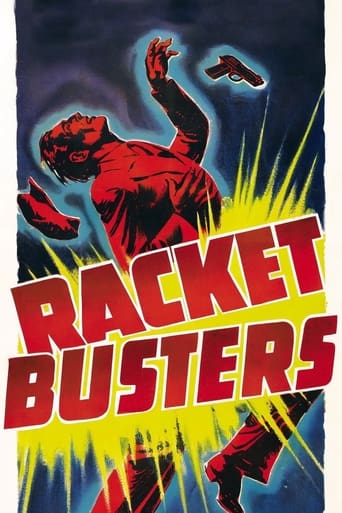JohnHowardReid
Humphrey Bogart (Martin), George Brent (Denny Jordan), Allen Jenkins (Skeets), Gladys Dickson (Nora Jordan), Walter Abel (Allison), Penny Singleton (Gladys), Henry O'Neill (governor), Oscar O'Shea (Pop), Anthony Averill (Dave Crane, Martin's chief henchman), Eliott Sullivan (Charlie Smith), Fay Helm (Mrs Charlie Smith), Joe Downing, Norman Willis, Ethan Laidlaw, James Pierce, Harry Tenbrook (Martin henchmen), Robert Strange (Martin's lawyer), Don Turner, Dick Wessel, Jimmy O'Gatty, Paul Panzer, George Lloyd, Bob Perry, Dick Rich, Lew Harvey, Jack Kenny, Joe Devlin, Alan Davis, Eddy Chandler, Glen Cavender (truck drivers), Irving Bacon (counter man), Egon Brecher (Peters), Cecil Weston, Jean Maddox, Loia Cheaney (angry women), Nat Carr, Harvey Clark, Harrison Greene (merchants), Dale Van Sickel (special officer), Monte Vandergrift (detective), Charles Trowbridge (judge), Edwin Stanley (doctor), Cliff Saum (policeman), Jack Mower (plainclothesman), John Ridgely (Yellow Stripe truck driver), Wedgwood Nowell (businessman), James Nolan (Allison's secretary), Harry Myers (court stenographer), Bruce Mitchell (deputy), Vera Lewis (Jordan's neighbor), Georgie Cooper (woman on subway platform), Mary Currier (Mrs Allison), William B. Davidson (Manhattan Trucking chairman), Joe De Stefani (proprietor), John Dilson (Robbins), Jack Gardner (gas station attendant), William Gould (police sergeant), Jack A. Goodrich (clerk), John Harron (Allison's stenographer), Gordon Hart (minister), Herbert Heywood (gas station owner), Stuart Holmes (Vic Thompson, a cleaner), Jan Holm (sanitarium nurse), Paul Irving (John H. Herbert), Frank Jaquet (City Hospital doctor), Jack Wise (cashier).Director: LLOYD BACON. Screenplay: Robert Rossen, Warren Duff. Story: Robert Rossen, Leonardo Bercovici. Treatment: Mark Hellinger. Photography: Arthur Edeson. Film editor: James Gibbon. Art director: Esdras Hartley. Costumes designed by Howard Shoup. Music composed by Adolph Deutsch, orchestrated by Hugo Friedhofer, directed by Leo F. Forbstein. Assistant director: Richard Maybery. Sound recording: Robert B. Lee. Producer: Samuel Bischoff. Executive producer: William Randolph Hearst.Copyright 1 June 1938 by Warner Brothers Pictures, Inc. A Cosmopolitan Production. New York opening at the Strand: 10 August 1938. U.S. release: 16 July 1938. Australian release: 22 September 1938. 71 minutes. SYNOPSIS: The underworld tries to muscle in on the trucking industry.COMMENT: Despite its rich production values with loads of extras milling around seemingly authentic locations, we know this is a program picture, because it has no stars billed above the title. None! Not even Bogart, who is billed first. His star had not yet risen. (Here he plays the typical 1930s gangster. Almost a caricature, if it wasn't so sinisterly menacing). Nor George Brent. His star was fading. (His portrayal comes over as lively and vigorous enough, but lacks the charm he brought to his earlier roles). Nor Penny Singleton. Her life as Blondie didn't begin until November, 1938. (This is one of her best performances and probably inspired her later real-life work smashing graft and breaking up underworld influence in the entertainment industry). The other main player, Allen Jenkins, rarely received above-the-title billing. Here, he convincingly handles a more serious part than usual, albeit with comic overtones. Mind you, the script is the work of Robert Rossen. Powerful enough, though it offers little that seems original or especially striking. It's director Lloyd Bacon (normally a rather humdrum type) who unexpectedly gives the movie a lift. Not only are the action scenes vividly staged, but even some dialogue exchanges are delivered at a pleasing run in front of a fast-tracking camera. With the director in this rare inventive mood (maybe he was inspired by the brilliant cameraman Arthur "Casablanca" Edeson), and lots of money to throw around, "Racket Busters" emerges as a fast-paced exposé. Brisk editing also helps.
MartinHafer
I liked this film and I am sure part of this is because I really do love the Warner Brothers gangster films of the 1930s. Sure, they were very predictable, but the stock company of actors (Bogart, Cagney, Robinson and others) and writing have made these movies timeless--something that can still be enjoyed into the 21st century. And this film has many of these wonderful elements--including Bogart in his "pre-nice guy" part of his career, as the evil mob boss.However, this Warner formula is a little different because of some of the plot elements and George Brent is playing a different sort of character. Brent usually did not play in gangster films even though he was a Warner contract player, and the guy he plays in this film really isn't a villain or exactly a good guy either. In many ways I appreciated that he was more a "typical guy who rises above when the chips are down"(how's that for using the lingo?). This doesn't always work well, though, as Brent's character just isn't very consistent--ranging from a dull-witted hothead who thinks he can take on the mob single-handedly to a wimp who willingly serves the mob to save his own sorry skin. With a bit of a re-write, this character could have been great and elevated the movie to greatness. As is, he's very interesting but very flawed. Another flawed character is the Special Prosecutor. Again and again he begs and threatens but can't understand why truckers won't give evidence against the mobsters. However, EVERY TIME that anyone talks(except at the end), they are either dead or beaten almost to death and the Prosecutor's Office did NOTHING to help!!! Duh!!!As for the plot, it's not exactly the typical gangster film with hoods knocking each other off or selling bootleg hooch (like in THE ROARING TWENTIES or THE PUBLIC ENEMY) but is about mob control of the trucking industry. The steps by which they muscle into the union and the lengths they go to destroy the opposition were actually pretty interesting and timely. By being a little different, the film really kept my interest. A very good film, but certainly not a great one due to a few plot holes.


